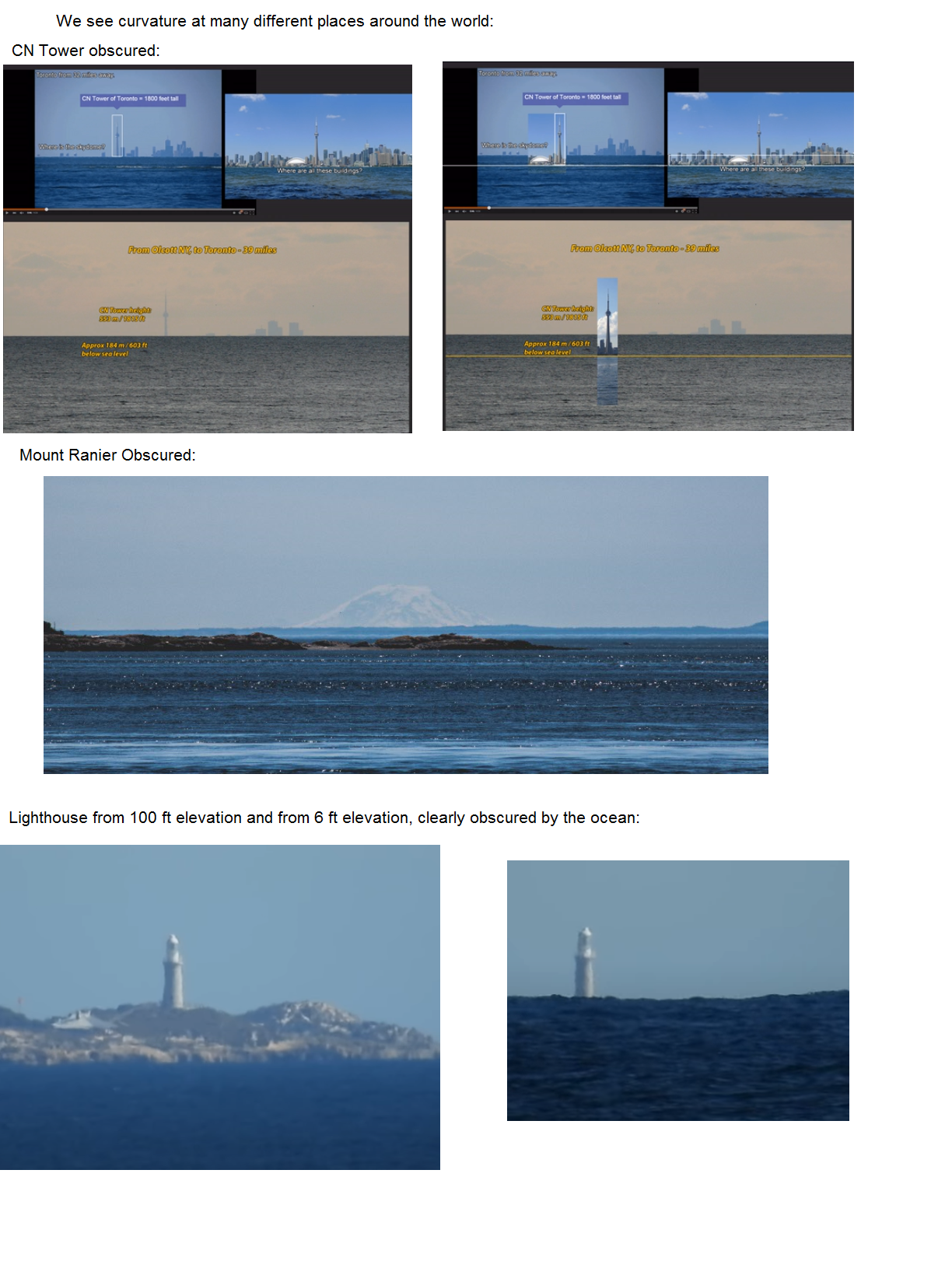Wiggles
New Member
I know Mick has said this is possible. There may be other threads here on how to do this (and my way is just one way) but couldn't find any (although here is an example of using LROs to observe the fact of curvature without getting a radius value for Earth.)
I'll get right to it, this image has all you need to know: (The idea is this: given an observation you see which radius values in the curve calculator give contradiction)

Here is a clickable link to the archive mentioned in the above image.
I said in the image that we "see curvature all over the earth". Here's a few images from different locations on Earth to confirm this (which is not really necessary given the number of LROs we have with water obstructing part of a distant object but hey why not):

So we answered two questions: Is the earth round? What is the radius value? There we have it. Earth is round and the radius of the earth is between 2950km and 8900km. I don't think NASA will find this information very useful for space exploration or anything like that but it might be useful to people on the edge of the flat earth rabbit hole.
I'll get right to it, this image has all you need to know: (The idea is this: given an observation you see which radius values in the curve calculator give contradiction)

Here is a clickable link to the archive mentioned in the above image.
I said in the image that we "see curvature all over the earth". Here's a few images from different locations on Earth to confirm this (which is not really necessary given the number of LROs we have with water obstructing part of a distant object but hey why not):

So we answered two questions: Is the earth round? What is the radius value? There we have it. Earth is round and the radius of the earth is between 2950km and 8900km. I don't think NASA will find this information very useful for space exploration or anything like that but it might be useful to people on the edge of the flat earth rabbit hole.
Last edited:
